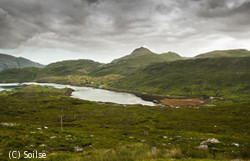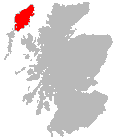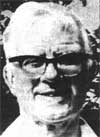© 03 Colin Melbourne
With testimony of Duncan Campbell
Two praying women moved God to visit the Isle of Lewis, turning their community, and the Scottish Hebrides, from sin to Christ. You and God can do that where you live, if you are willing to repent and believe.
Introduction

Duncan Campbell was preaching his heart out, and getting nowhere. The congregation were quite content in their stiff, cold, and dead, religious routines.
What could he do?
He noticed a young lad near the front, weeping quietly, only recently saved and baptised in the Holy Spirit, a pool of tears around his farmer’s boots. Campbell, in humility, recognized that the youth was closer to God than he was, so stopped preaching, and asked him to stand and pray.
Just three sentences of prayer from the new believer prompted the power of God to fall upon the whole assembly.
Those formal Scottish Presbyterian churchgoers began crying out for mercy to God. Half of them stood arms outstretched to Heaven, transfixed in the Glory for two hours, the other half slumped to the floor calling on the Lord in heartfelt repentance. At the same time, the Spirit of God swept through a village seven miles away, and practically every household in the village had someone saved that night. That’s revival!
Do you want revival in your life, in your fellowship, in your community? God does.
It began with two housebound sisters in their eighties, one blind, the other crippled with arthritis, waging a prayer campaign that delighted Heaven and defeated Hell.
Background to the Hebrides Revival

The chain of Western Hebridean Isles nestle within sight of the Scottish mainland at the northern gateway to the Irish Sea. Their remote tranquility has, over the centuries, attracted settlers of both crofting and fishing communities, as well as various religious orders. Many of the Island’s names are familiar worldwide because of their tweeds, tartans, whiskey, wool, or Celtic religious associations. Most people have heard of Lewis, Harris, Uist, Barra, Benbecula, Mull, Iona, Skye, and Eigg.
Scottish Celts speak Gaelic with a beautiful distinctive accent, and a much more mellow attitude to the conquering English than is found on the mainland of Scotland. The climate is typically North Atlantic; cold, clear, windy, and wet.
Traditional Celtic ‘Christianity’ is a demonic blend of paganism, witchcraft, superstition, and Roman Catholic false teaching. Christ has nothing to do with it. It’s simply another satanic counterfeit; which explains why it’s touted today by New Agers, and pagans, as ‘Christian’.
The first time I visited a ‘Christian’ church graveyard in the Western Isles I was stunned to see so many demonic symbols on the graves of professing ‘Christians’. Not merely the Celtic Cross, with a circle symbolising the ‘binding of Christ’s power by Satan’, but the skull and crossbones was on almost every headstone. Freemasons and Knight’s Templars have masqueraded here as ‘Christian’ for centuries.
It wasn’t until the Scottish founder of Presbyterianism, John Knox, began the sixteenth century Scottish Reformation, and faced down Catholic Mary Queen of Scots, that genuine Christianity gained a significant foothold in Scotland.
Sadly, so often when the original leaders pass on, their heritage wanes into formalism and death. It happened not only to John Knox, but also to John Wesley, and Martin Luther. The heart of the message is smothered by religious routines and forms, and within a generation, zealous Christian saints are replaced by traditional churchgoing sinners. This occurred throughout Scotland, and the rest of Great Britain. They call themselves Christian of course, attend services, and wouldn’t think of leaving home each day without reading God’s word, and holding family prayers. But they’re dead in their sins, not born again. Nominal ‘Christians’; Christian in name, but not in fact. You know people like that don’t you? Even ministers. They need you and God to wake them up!
This was the situation on the Isle of Lewis in the late 1940s. There were no conversions, the Island youth were rebellious, and lost in sinful pastimes. They likened becoming a Christian to ‘catching the plague’. So the incumbant church leaders decided to do something about it. They issued a proclamation calling on the Lewis Christian community to examine their spiritual state, and petition God to send repentance before it was too late.
Most people ignored the call, but two dear aged sisters took it to heart, and began interceding for the Island in devoted prayer. The Smith sisters knew the Living God, and they were in earnest. Two days a week, from ten in the evening until three in the morning, week in, week out, they took hold of God.
Revival in the Hebrides
Oh, the people God uses! Blind Peggy and her arthritic Sister, Christine, were too infirm to get to church services; hadn’t a clue about healing being part of their salvation, nor were they filled with God’s Spirit. But they knew God, and were passionate for His Glory, and so He met with them, and honoured their faith in Him.
He came in such a powerful Presence upon the Isle that sinners fled from their sins at all hours of the day and night, calling on God to save them. On their fishing boats, and in the fields, sinners broke down and cried out for mercy, before hearing a single word from any preacher. Ministers had to hold four church services an evening, such was the hunger for God. At 7pm. 10pm. midnight, and 3am. every day. Often the church was packed to the doors, with more souls outside praying in the fields than inside.
God roused sinners from their beds, others just couldn’t sleep, and went to their knees. Weavers were struck down in trances, and saved at their looms. Farmers tilling the land habitually stopped at midday for two hours of prayer.
Most of the people saved in the revival were born again outside any church building. Preachers generally didn’t need to lead them to an altar call for salvation, instead they left them to God, believing He was the best Person to reap their soul.
One lad fell to his knees by a pig-sty, and was wonderfully born again. Not long after, he was late coming home from the fields, and a search party found him face down in the heather repeating over and over, ‘Oh Jesus I love you, I love you Jesus!’
When he was asked to pray during a particularly stiff service, just three sentences of prayer brought forth the Fire of God. The preacher, Duncan Campbell, said that more souls were saved through young Donald’s prayers than all the preaching of all the preachers in the revival.
The people God uses. It’s a glorious thing to be so burdened with gratitude and love for Christ that you don’t even know you have a body. Smith Wigglesworth lived there nearly all the time. Is God willing to bring you into the same place as that youth? Will you dare to ask Him?
The pub had to close, and never re-opened, crime ceased, the police jail was left unused, and virtually every person on Lewis and Harris was saved during the almost three year revival. People came in boat-loads from neighbouring communities, and the revival spread throughout the Western Isles.
This was no flash-in-the-pan gimmicky fad. There was real fruit, and the fruit lasted. Missionaries who were saved in the Lewis Awakening served God around the world.

Another character central to the Hebridean Revival was revealed to Peggy Smith in a vision when she first got down to prayer. God showed Peggy her father’s chapel overflowing with young people, and a preacher who she didn’t know in the pulpit. He was God’s man for the revival, and his name was Duncan Campbell. A fifty one year old Edinburgh based Faith Mission minister, recently invigorated by a call to preach in the Highlands and Islands. He possessed a passion for souls, and a blessed humility that allowed God to lead him, and use him despite the limitations of his theology.
Campbell has written his account of the Lewis Revival in an article called ‘The Lewis Awakening 1949-1953’. That you can read here, but he covers the same ground in a taped audio message that is even more anointed. So we have included a transcript of that message in this article to bless and inspire you. Here it is… Duncan Campbell’s Testimony Here…
© 03 Colin Melbourne
